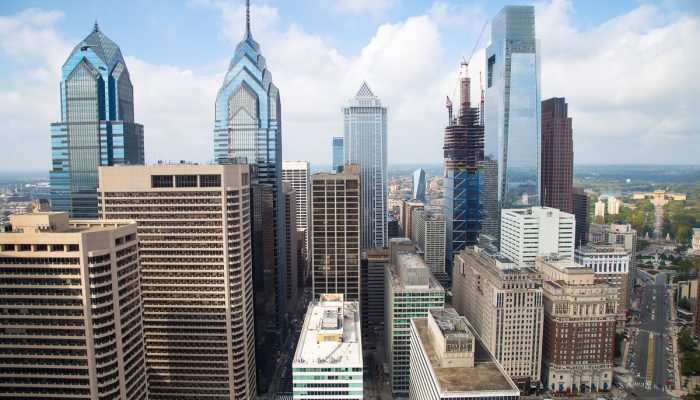Did you know that buildings are the single-greatest source of carbon pollution in Philadelphia? To achieve the visions set out in Greenworks, we’re working to reduce that source of emissions and save energy through our Building Energy Benchmarking Program.
To help building owners and managers in Philadelphia better understand their energy and water usage, City Council passed a law in 2012 requiring non-residential buildings 50,000 square feet or larger to benchmark their facilities and annually disclose a subset of data. The law was amended in 2015 to include residential buildings.
Using Portfolio Manager, a free benchmarking tool provided by the U.S. Environmental Protection Agency (US EPA) they report on their facility’s annual energy and water usage. ENERGY STAR Portfolio Manager normalizes energy usage data for building size, use, and weather. The program compares the information to other similar buildings nationwide and calculates a 1-100 ENERGY STAR score for their facility type, if eligible. A score of 75 or above indicates it’s in the top 25 percent compared to other peer facilities in the US and can become ENERGY STAR certified.
The Office of Sustainability reports key metrics to provide the community with citywide building performance data. We looked at some of the top performers in Philadelphia for 2017, scoring 90 or higher.
1.The Lofts at Logan View, Score: 90
This renovated warehouse was originally built in 1903. It’s come a long way since then. It’s now a contemporary apartment complex that features abundant sunlight and sustainable design.
2. One Logan Square, Score: 91
This skyscraper sits right along Logan Square, getting a great view of the city. It boasts 31 energy friendly floors that keep the occupants of its office spaces happy and healthy.
3. 615 Chestnut Street, Score: 91
This office building was awarded an Energy Star label for its operating efficiency. Renovated in 2003, it contains a post-office, restaurant, travel agency, bookstore, and onsite parking.
4. Independence Blue Cross, Score 92
The Independence Blue Cross building, also known as the G. Fred DiBona Jr. Building, claims the title as Philadelphia’s sixth tallest skyscraper, in addition to its top energy performance.
5. IRS 30th Street Campus, Score: 92
What used to be the Main Post Office in Philadelphia, the IRS campus uses alternative energy and energy management practices to help achieve high score with Energy Star. The Art Deco building is also featured on the National Register of Historic Places.
6. Jewish Federation of Greater Philadelphia, Score: 92
The Jewish Federation was constructed in 1913. It has gradually improved its energy performance since it was first scored a 75 in 2012.
7. Five Crescent Drive, Score: 93
This Navy Yard office building was completed in just 2013. It’s attention to energy and sustainability in its original design earned it a double LEED Platinum certification, the first in Philadelphia. Compared to conventional buildings, Five Crescent Drive saves as much as 30% of energy use.
8. Philadelphia Ronald McDonald House, Score: 94
The mansion that the Ronald McDonald House resides in was built in 1893. Their recent investment in energy efficient and water conservation upgrades has saved enough money that they were able to pay back the cost of the retrofit in just 1.4 years. They’re also the winners of this year’s DVGBC Groundbreaker Awards.
9. 1818 Market St, Score: 95
Constructed in 1973, this building houses offices and retail on the ground level. After restoring the building’s façade, modernizing the elevator system, and renovating the interiors, this building has improved its energy performance and continues to do so each year.
10. Mercy Philadelphia Hospital, Score: 100
Considering the amount of energy needed to power the critical life-saving equipment necessary for a hospital, it’s impressive that Mercy Philadelphia Hospital is the highest Energy Star scoring building on the list. The hospital uses 35 percent less energy and generates 35 percent fewer greenhouse gas emissions than similar buildings across the nation. They’ve been working on improving energy performance since before the benchmarking law and it’s paid off in savings. Through programmed HVAC equipment and retrofitted light fixtures to motion and light sensors, this hospital is saving energy and saving lives.
Interested in seeing how your building ranks? Check your score at the City of Philadelphia’s Building Energy Benchmarking site.

